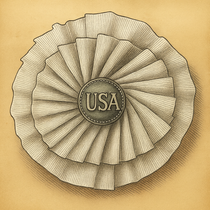
Our Uniforms
Continental Army Uniforms and the Distinctive Colors of Military Musicians
During the American Revolution, the Continental Army aimed to unify its soldiers under a standard uniform — but in practice, colors and styles varied widely by region, state, availability, and time period. At the war’s outset, many soldiers wore civilian clothing or local militia attire, often in brown, green, blue, or hunting frocks. As the Continental Army matured, Congress and General Washington introduced a system to distinguish different departments by coat and facing colors — a practical solution that also gave each region its own military identity. By 1779, the Continental Army adopted a more coordinated color scheme by region.


Regional Uniform Colors (1779 Regulations)
Pennsylvania, Maryland, Delaware, Virginia:
Dark blue coats with red facings (lapels, cuffs, collars)
North Carolina, South Carolina, Georgia:
Dark blue coats with light blue facings
New England states:
Dark blue coats with white facings
New York and New Jersey:
Dark blue coats with buff or tan facings
These color assignments helped visually organize the growing army and added cohesion to Continental forces spread across different theaters of war.
Musicians’ Uniforms: Reversed Colors for Visibility
Fifers and drummers held a vital role in communication on the battlefield and morale. their uniforms were deliberately distinct. Their instruments gave orders when voices could not be heard, and their steady rhythms helped soldiers march, drill, and fight as one. To ensure they stood out on the field and could be easily identified by officers, military musicians wore reversed colors.
If the regiment wore blue coats with red facings, the musicians wore red coats with blue facings. This reversal signaled that they were non-combatants, serving in a musical and signaling role rather than carrying muskets. This tradition of reversed colors helped maintain battlefield order and honored the important symbolic and practical role musicians played in military life.


Our Corps' Uniforms
The Brandywine Colonials Fife and Drum Corps proudly wears the uniform that a regiment from Pennsylvania, Maryland, Delaware and Virginia would have worn. Our Honor Guard wears dark blue coats with red facings while our musicians were the reversed colors: red coats with dark blue facings. Both wear off-white vests and breeches.
Our uniforms are not just colorful — they are historically grounded tributes to the musicians who served with dignity, purpose, and pride in America’s War for Independence.
Our Cockades
During the American Revolution, a simple ribbon rosette could speak volumes. General George Washington issued several orders regulating the use of cockades—the colored knots of ribbon worn on soldiers’ tricorn hats—not just as decoration, but as vital symbols of rank, allegiance, and staff position. In his earliest orders from 1775 and 1776, Washington assigned specific cockade colors to officers based on rank: red or pink for field officers (Major, Lieutenant Colonel, Colonel), buff or white for captains, and green for subalterns (Lieutenant, Ensign). Later, as the alliance with France deepened, Washington endorsed the black-and-white “Union Cockade” to represent the unity between the American and French forces. By 1780, officers were required to wear cockades, and Washington introduced distinctive feather plumes to identify aides-de-camp and staff officers. Though often overlooked today, these small but meaningful insignia played an important role in the appearance and organization of the Continental Army.
Regional Continental Army Combatant Uniforms
Regional Continental Army Musician Uniforms














